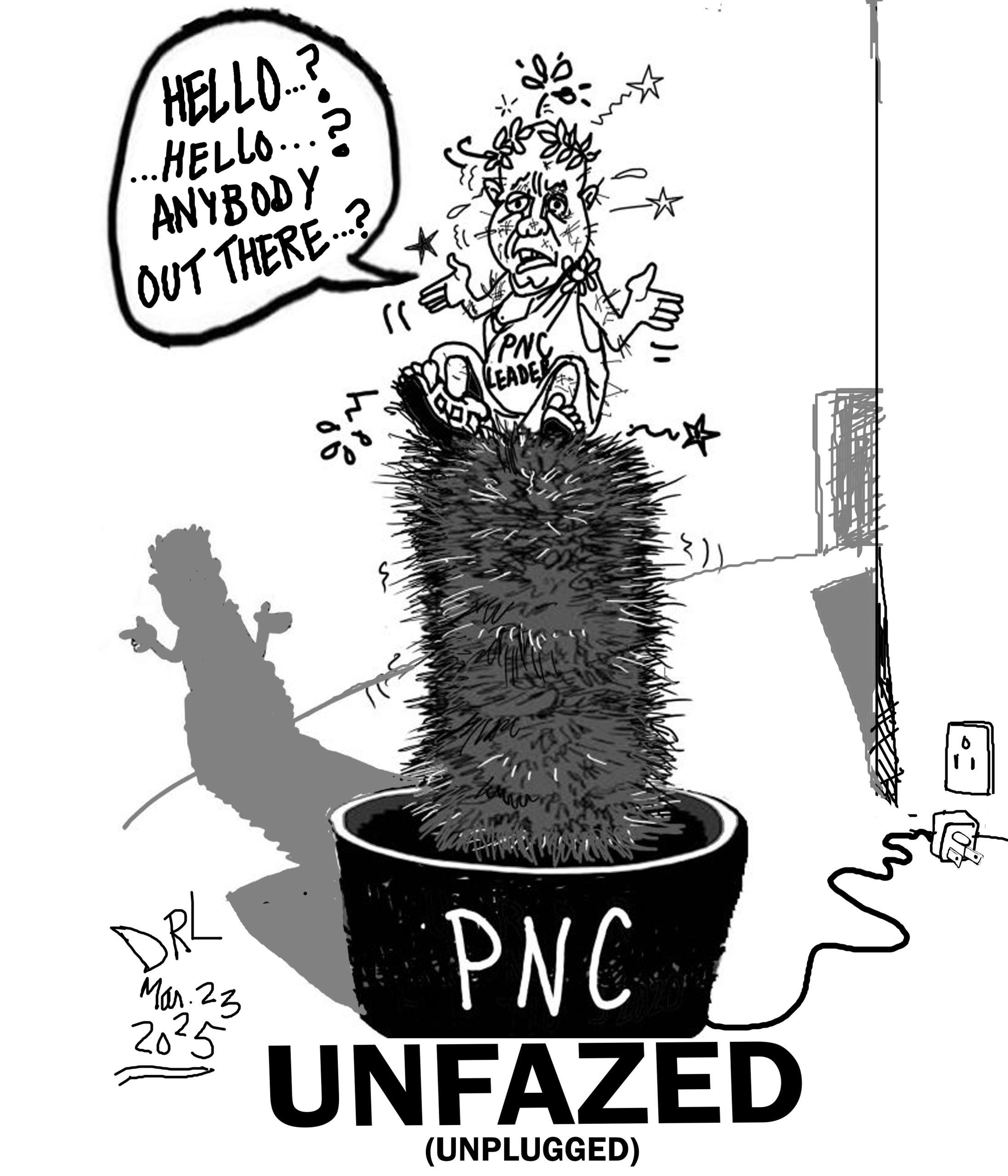Latest update March 31st, 2025 5:30 PM
Latest News
- Bandits cut through roof to rob WBD Supermarket
- Court Orders “Critic” to pay the Mohameds $52M
- ExxonM and CNOOC sticking to 11B barrels figure in Stabroek Block, but Hess says estimate higher
- Deadly Israeli strikes mar Gaza Eid celebrations
- Govt. to roll out automated speed ticketing system next week
The police and the communities
Nov 20, 2014 Editorial
We are told that the “Impact Albouystown Project’ reintroduced by the current police administration has led to spinoff initiatives in several other communities, namely Angoy’s Avenue; Beterverwagting; Triumph; and Agricola. Notably, the inescapable point which is obvious to even the least discerning is the fact that the architects are ignoring certain areas when it comes to the establishment of similar community safety projects.
Among the disadvantaged communities that are no strangers to crime are Enmore, Success, and Lusignan, East Coast Demerara, while on the west side are places like La Parfaite Harmonie, and Tuschen.
It is all too easy to claim success when the original intent, objective(s) and measures for success are not widely known to the general public. And therefore, there is a temptation to claim success whenever there is any indication that points to an unusual but not unpleasant occurrence in the general scheme of things.
It is now time to have an evaluation of the Albouystown Project and other similar ventures in a report to stakeholders to determine if the stated objectives have been met; the achievement of intended outcomes; and the experiences with respect to unintended benefits and/or consequences. Agreeing on a clear purpose will help identify engagement objectives, anticipated outcomes and help to determine the scope and depth of the engagement.
It is widely accepted that a uniformed police presence on the streets and in other public places although desirable, has long ceased to be the sole role of police officers and the local law enforcement and security situation has been bolstered by the expansion of private security patrols and the establishment of warden, neighbourhood and community policing schemes, all of which provide an additional visible and reassuring presence within communities.
Are we reassured that these bodies are not being used for any other reason that for which they were set up ostensibly to do? Those auxiliaries are expected to contribute to the safety and security of their communities in co-operation with the police force in the areas of crime prevention and tackling anti-social and other forms of public nuisance and disorder.
However, it is important to note that a community engagement such as that which targets problem-prone areas, works well where it is an ongoing cumulative process enabling relationships and trust to build and strengthen over time.
Taken into consideration would have been the capacity of different stakeholders and their ability to participate in specific community projects such as Albouystown. And therefore it would be an interesting lesson to be learned how the GPF was able to overcome certain barriers including the process involved in engaging the vulnerable target groupings such as young people, older people, or socially excluded groups.
Reaching these various groups would not have been an easy undertaking bearing in mind the level of community infrastructure, and whether the community was unified or divided racially, politically; was socially excluded from the mainstream; or felt marginalized and stigmatized by a certain perception.
Mention was made earlier of the importance of evaluation. Therefore it is critical that any engagement process be evaluated on an ongoing basis to provide valuable feedback on the best methods for engaging with specific groups in a particular area. Contributors would have the realistic expectation that audits would deliver information on the appropriate use of financial and other contributions.
One aspect of community engagement which seems to have been overlooked, is the utilization of community mapping which is similar to crime mapping. The significant difference is that maps and photographs of an area or specific location are used to illustrate how people view their area: what they like or dislike or improvements they would like to see.
Group discussions can help residents explore issues, build consensus or identify areas of conflict and solutions. Among the advantages are that it engages people of all levels of capability; builds a sense of community ownership and helps residents see, understand and appreciate their community in different ways.
Finally, the overriding consideration should be retaining and developing meaningful engagement with all stakeholders since it is important to remember that context may change, and challenges may arise concerning the purpose and continuing usefulness of the intervention by questioning its objectives, scope, or methodology.
Share this:
- Click to print (Opens in new window)
- Click to email a link to a friend (Opens in new window)
- Click to share on Facebook (Opens in new window)
- Click to share on WhatsApp (Opens in new window)
- Click to share on Twitter (Opens in new window)
- Click to share on Pinterest (Opens in new window)
- Click to share on Pocket (Opens in new window)
- Click to share on Tumblr (Opens in new window)
- Click to share on Reddit (Opens in new window)
- Click to share on LinkedIn (Opens in new window)
Related
Similar Articles

The Glenn Lall Show|| March, 28th, 2025
Follow on Tik Tok @Glennlall
THE BLUNT OF THE DAY

Sports
Mar 31, 2025
-as Santa Rosa finish atop of Group ‘B’ Kaieteur Sports- Five thrilling matches concluded the third-round stage of the 2025 Milo/Massy Boys’ Under-18 Football Tournament yesterday at the...Features/Columnists
Choosing between bad and worse
Peeping Tom… Kaieteur News- I’ve always had an aversion to elections, which I suppose is natural for someone who... more
The U.S. “Joining” the Commonwealth: an unreasonable expectation
By Sir Ronald Sanders Kaieteur News- Recent media stories have suggested that King Charles III could “invite” the United... more
Publisher’s Note
Freedom of speech is our core value at Kaieteur News. If the letter/e-mail you sent was not published, and you believe that its contents were not libellous, let us know, please contact us by phone or email.
Feel free to send us your comments and/or criticisms.
Contact: 624-6456; 225-8452; 225-8458; 225-8463; 225-8465; 225-8473 or 225-8491.
Or by Email: [email protected] / [email protected]
Weekend Cartoon














